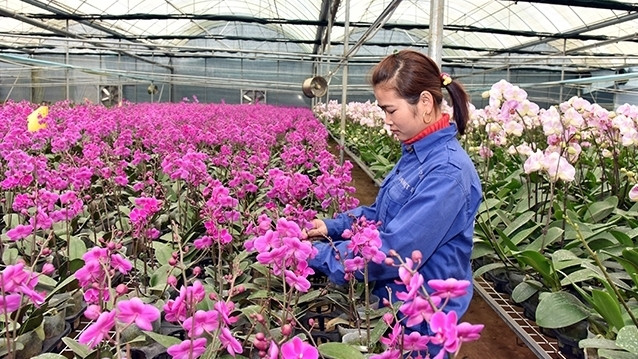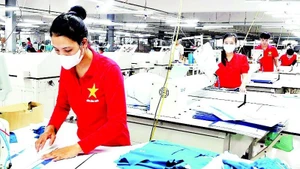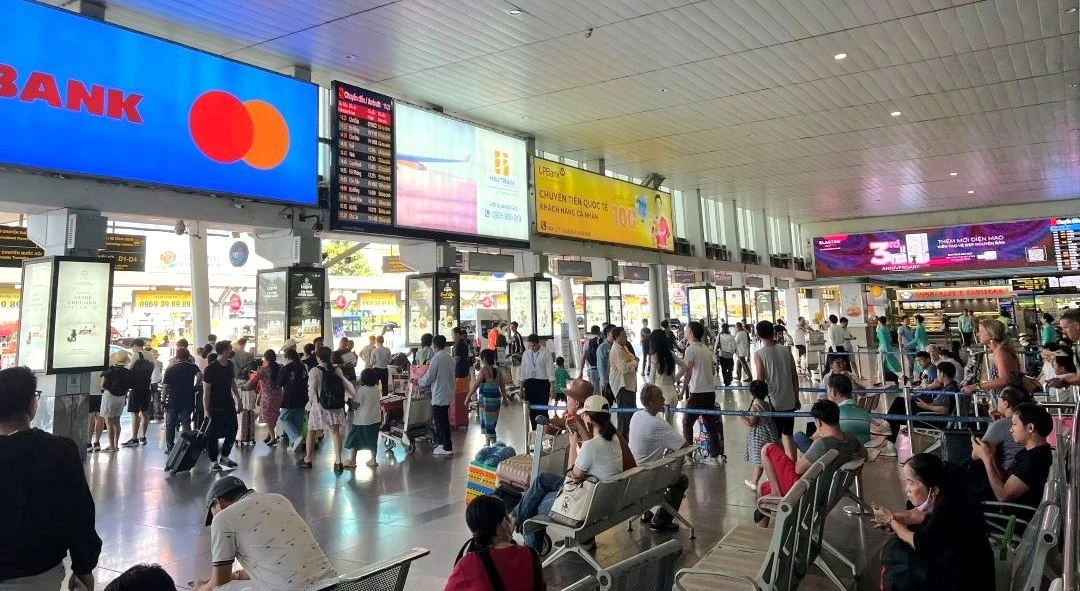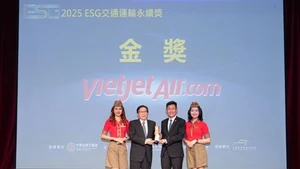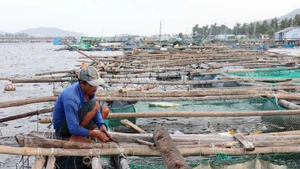Initial results
Surveying several hi-tech agricultural models in Moc Chau district, Son La province, the head of the district’s Agriculture and Rural Development, Tran Xuan Thanh, affirmed that thanks to the application of science and technology in agricultural production, Moc Chau has become one of the top agricultural product suppliers in Vietnam with multiple well-known brands that have gradually conquered even foreign markets with their cabbage, broccoli, napa cabbage, tomato and plum. The district is implementing more than 100 models of biotechnology applications, 55 models using Israeli sprinkler and drip irrigation technology, 240 ha of production under VietGAP and GlobalGAP standards and more than 30 supply chains of safe agricultural products with science and technology advances applied from cultivation to processing and consumption. Local enterprises, cooperatives and households have built greenhouses for the production of safe vegetables, flowers, fruits and tea.
Recently, the Red River Delta has become a bright spot in the application of science and technology, helping to transform traditional agriculture into a modern one with the participation of leading corporations. Notably, VinEco Company under the giant conglomerate Vingroup has 14 farms with a total production area of 3,000 ha, along with 1,000 cooperatives having cooperation with farmers to consume 2,000 tonnes of agricultural products each month. Besides expanding its scale of production in several localities in the region, VinEco farms also take the lead in bringing the world's leading technologies into Vietnam, such as Kubota cultivation technology from Japan, Netafim drip and sprinkler irrigation technology from Israel, TAP membrane production technology, hydroponic farming using NFT nutrient film technology and Microgreen sprouts planting technology.
Aiming at high-tech agriculture, Ha Nam province has implemented a programme to support printing stamps for agricultural product traceability, considering it one of the key solutions for local hi-tech agricultural development. So far, the Ha Nam Provincial Department of Science and Technology has supported 42 models of hi-tech vegetable, tuber, fruit and flower production with scales from 3 to 5 ha and over, along with 60 models producing vegetables, tubers, fruits, mushrooms and flowers from 0.2 ha to under 3 ha in the province. There have been 10 models certified with the "Ha Nam certification mark".
The head of the Department of Science and Technology of Ha Nam province, Dang Dinh Thoang, said that the relevant local departments, agencies and localities have been mobilised to join hands in the implementation and management of the programme, contributing to improving the quality of agricultural products and the prestige of the local brands. The programme contributes to promoting the development of clean agricultural production with high productivity, high product quality and high production values, while ensuring food hygiene and safety. It also helps establish various models of connections between households, cooperative groups and cooperatives with enterprises in the clean agricultural production through the signing of economic contracts, while at the same time, assisting agricultural production establishments in achieving high quality in developing their brands and increasing product competitiveness.
According to a report from the Ministry of Agriculture and Rural Development, the country currently has 35 hi-tech agricultural zones established under the decisions from the Prime Minister and the provincial People's Committees. Thanks to the establishment of such zones, localities across the country have achieved positive agricultural achievements, in which Lam Dong is at the spearhead, as it has invested in hi-tech agricultural development with 125 value chains, seeing the participation of 75 enterprises, 40 cooperatives and 42 cooperative groups. In particular, there are 68 local production and consumption chains have been recognised by domestic and international certifying organisations for meeting high quality for vegetables, flowers, coffee and cow's milk. Lam Dong is implementing a project in promoting linkage in production, processing and consumption of agricultural products in the 2019-2023 period, targeting to establish 200 production and consumption chains, including 120 provincial and 80 district and commune-level ones, ensuring that each commune has at least one linkage model for their key products. These linkages have the participation of 32,000 households, 150 businesses and 50 cooperatives, with the volume of agricultural products consumed through the chain reaching 30% of the province's key agricultural product output.
Promoting the leverage role of science and technology
However, the results in hi-tech agricultural development in some localities show that the leverage role of science and technology have not been promoted in agricultural production. Hi-tech production models are still small, with many exported agricultural products not having a brand yet and without the full participation in the global value chain. Most of these products are sold in the world market as raw materials or using foreign brands of the importers, resulting in a major disadvantage for Vietnamese agricultural products as it is limiting their competitiveness. The products have not been clearly defined on how to approach the market in terms of positioning quality and brand, associated with production area planning and policies and solutions to approach, expand and keep firm market share, as well as improving competitiveness in the global value chain.
Even in Moc Chau district (Son La), the application of new science and technology advances just focuses on a limited number of stages, such as the use of new varieties, biological products, fertilisers and bio-pesticides, while irrigation systems and greenhouses have not been replicated. The application of new preservation technology has received limited attention, thus affecting the export of agricultural products. Noticeably, limited investment for hi-tech agricultural production has halted the establishment of concentrated production areas. On the other hand, the lack of necessary tools to distinguish and protect hi-tech agricultural products in the market has led to limited investment efficiency. Currently, production facilities find it difficult to access capital sources. Currently, the organisation of production and linkage in value chains is still weak, making the quality of agricultural products not uniform and resulting in a low level of participation in the global value chain.
In order for science and technology to promote its role as a leverage in production, experts have said that it is necessary to mobilise social investment resources, in which the State budget prioritises to support the implementation of projects and tasks on hi-tech and sustainable agricultural development to cope with climate change. Science and technology organisations need to innovate in their research activities and transfer scientific and technological results into production to support businesses and farmers in hi-tech agricultural development. The State also needs to have policies to encourage investment in setting up specialised research centres and forming a close link between enterprises and science and technology organisations to promote the research and application of science and technology. It is also crucial to promote hi-tech agricultural research and development activities, while bringing scientific knowledge and progress from scientists to farmers to apply in production. This link will help businesses develop sustainably, while farmers also improve their income.
According to Dr. Pham Thi Tram, from the Institute for Human Geography under the Vietnam Academy of Social Sciences, in the current context, to form agricultural value chains, it is necessary to further strengthen the role of the State in supporting the issuance of standard certificates and manufacturing area codes, as well as training farmers on production techniques. It is necessary to organise forums and trade promotion programmes and issue documents defining regulations on export conditions. On the other hand, tax incentives are also important to facilitate market access for agricultural products. With the goal of promoting agricultural development towards modernity and sustainability with high added value, there should be changes, especially in the implementation of the land accumulation policy to truly have enough "land" for hi-tech agriculture.
As part of the trend of increasing international integration, brand building and development is a necessary direction for Vietnam's agricultural products to improve their position in the international market, and above all, to demonstrate the role of science and technology in agricultural production, thus contributing to promoting production and trade activities and improving product value chains towards sustainable development.
